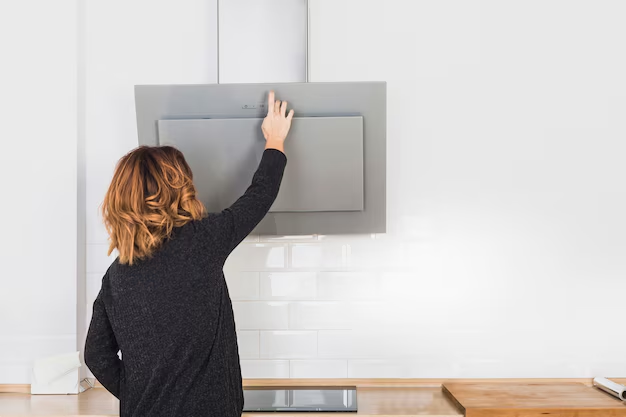Discovering DIY: How to Repair Your Refrigerator Efficiently
Refrigerators are the unsung heroes of our kitchens, tirelessly keeping our food fresh and drinks cold. But what happens when they're not running optimally? The costs and logistics of professional repairs can often be daunting. Knowing how to tackle common refrigerator issues yourself can save both time and money. In this comprehensive guide, we'll explore practical DIY solutions to get your refrigerator back in top shape.
🛠 Common Refrigerator Problems 101
Before diving into repairs, it's crucial to identify the issue. Here are some frequent refrigerator problems and their causes:
Refrigerator Not Cooling Properly
A fridge that isn’t cooling can quickly lead to spoiled food. Several factors might cause this problem:
- Thermostat Issues: If the thermostat is set incorrectly or stuck, it might not maintain the right temperature.
- Dirty Condenser Coils: Dust and grime can accumulate, hampering the coils' efficiency.
- Faulty Door Gaskets: Old or damaged gaskets can allow cold air to escape.
Strange Noises
Unusual sounds can be a sign of impending issues:
- Fan Problems: A faulty evaporator or condenser fan can cause rattling or humming noises.
- Compressor Start Relay: When this fails, it can result in a clicking noise when the compressor tries to start.
Water Leaking on the Floor
Water leaks are both a hazard and a nuisance:
- Clogged Defrost Drain: This can cause water to pool in the fridge compartment.
- Faulty Water Inlet Valve: If the valve is broken, it might leak water onto the floor.
Ice Maker Malfunctions
An ice maker not doing its job can be frustrating:
- Jam in the Ice Mold: Ice can get stuck, preventing additional ice from forming.
- Faulty Motor or Arm: These components are crucial for ice production.
👨🔧 Repair Solutions You Can Try at Home
Now that we know the common issues, let's explore some fixes you can attempt yourself. Keep in mind that before you begin any repair, always unplug your refrigerator to avoid electric shock.
Cleaning Condenser Coils
Over time, condenser coils can become clogged with dust and reduce efficiency. Here's how to clean them:
- Locate the coils. They are often behind a grille at the front or back of the fridge.
- Use a vacuum cleaner with a brush attachment to clear away dust.
- Carefully finish cleaning with a coil brush for thorough removal of debris.
Replacing the Door Gaskets
If your fridge door’s gasket is worn out, cold air can escape, reducing efficiency:
- Purchase the correct replacement gasket for your model.
- Soak the new gasket in warm water to make it more pliable.
- Remove the old gasket by unscrewing any retainers.
- Install the new gasket, ensuring it fits snugly without gaps.
Defrost Drain Clearing
A clogged defrost drain can cause water leaks:
- Locate the drain — usually found at the bottom of the fridge compartment.
- Use a mix of water and vinegar to flush the drain with a turkey baster.
- Clean any remaining debris with a pipe cleaner.
🚨 Key Troubleshooting Tips
When performing DIY repairs, certain tips can improve your efficiency and success rate:
- Keep a Multimeter Handy: This tool can help diagnose electrical issues by testing components like thermostats and relays.
- Be Methodical: Address one potential issue at a time to find the root cause effectively.
- Consult Your Fridge Manual: If available, the manual can offer parts diagrams and specific instructions for your model.
- Safety First: Always wear protective gloves and goggles where necessary.
🧰 Essential Tools You Might Need
- Screwdriver Set: For detaching parts and accessing internals.
- Coil Brush: To clean stubborn dirt off condenser coils.
- Multimeter: Essential for testing electric parts.
Use these tools to ensure a safe and efficient repair process.
✅ Quick Reference Guide: DIY Refrigerator Repairs
Here’s a straightforward summary of the steps and tips to keep in mind——perfect for quick referencing during repairs:
| Issue | Possible Cause | DIY Solution |
|---|---|---|
| Fridge Not Cooling | Thermostat, Dirty Coils | Check settings, clean coils |
| Unusual Noises | Fan Issues, Relay Problems | Inspect or replace fans, relay |
| Water Leaking | Clogged Drain, Bad Inlet Valve | Unclog drain, replace the valve |
| Ice Maker Issues | Jammed Mold, Faulty Components | Clear jams, inspect components |
🔍 When It’s Time to Call a Professional
While DIY fixes are empowering, there are times when a professional is the best choice. Consider reaching out for help if:
- The refrigerator issues persist after multiple repair attempts.
- You face problems with the compressor or internal wiring.
- You're uncomfortable executing a repair or lack the necessary tools.
🌟 Final Thoughts
Repairing your refrigerator yourself can be a rewarding process once you understand the basic issues and solutions. Regular maintenance and attentive troubleshooting can extend the lifespan of your appliance significantly. Remember, while DIY can address numerous problems, don't hesitate to consult a professional for more complex issues to keep your kitchen running smoothly. Maintaining a balance between DIY knowledge and knowing when to seek expert help ensures your fridge serves you efficiently for years to come.
